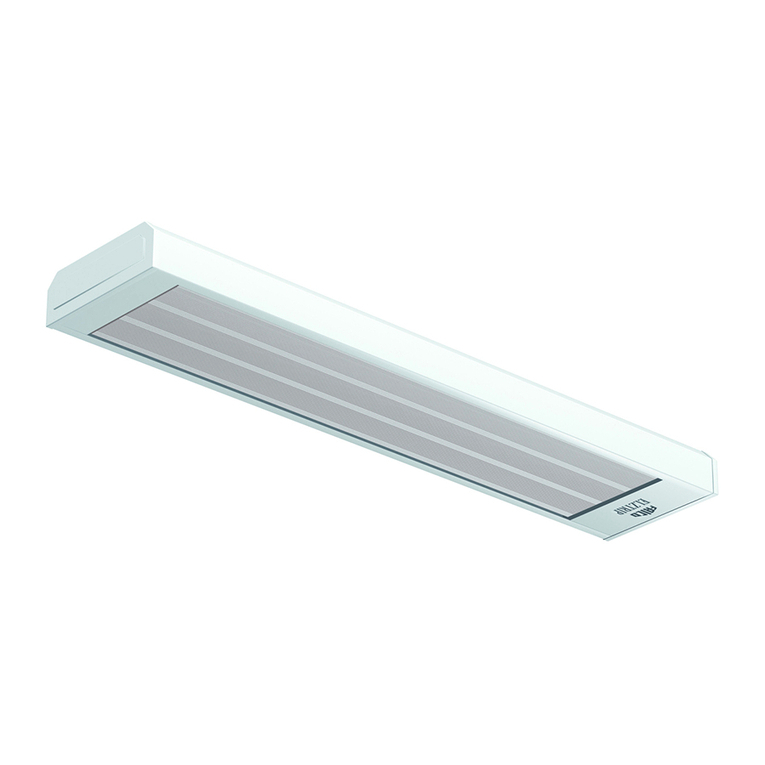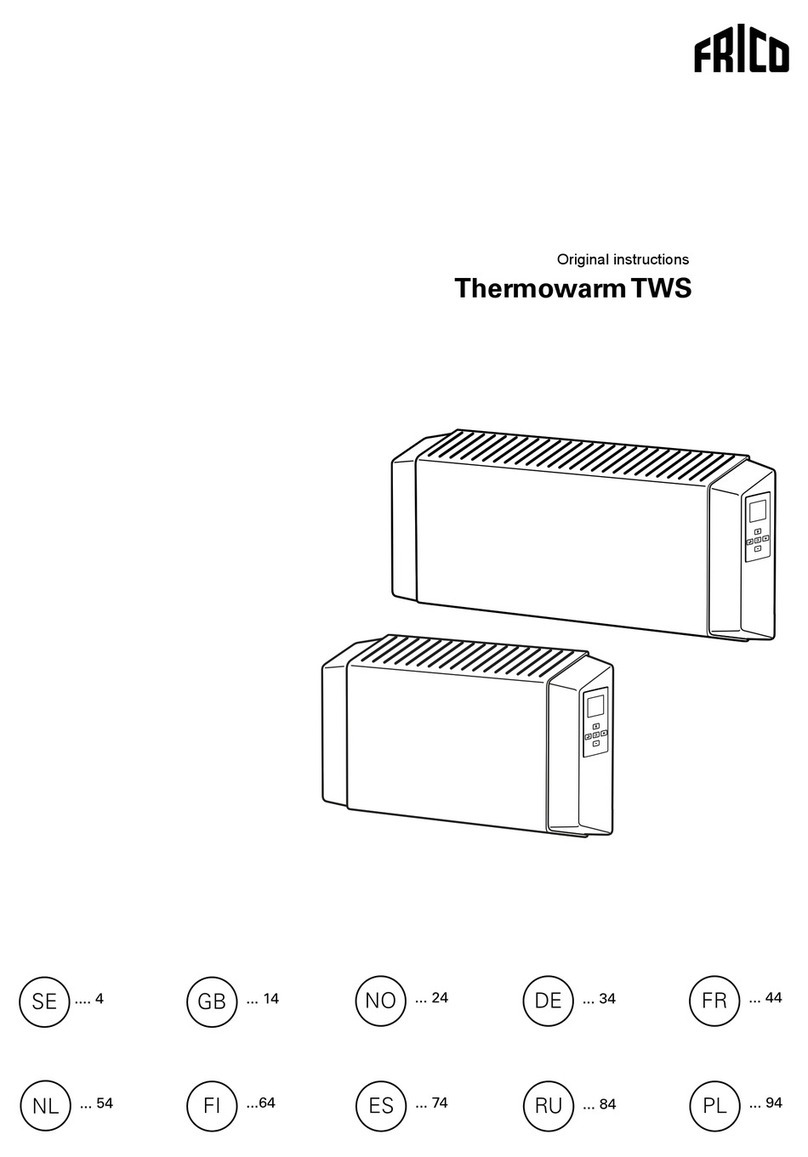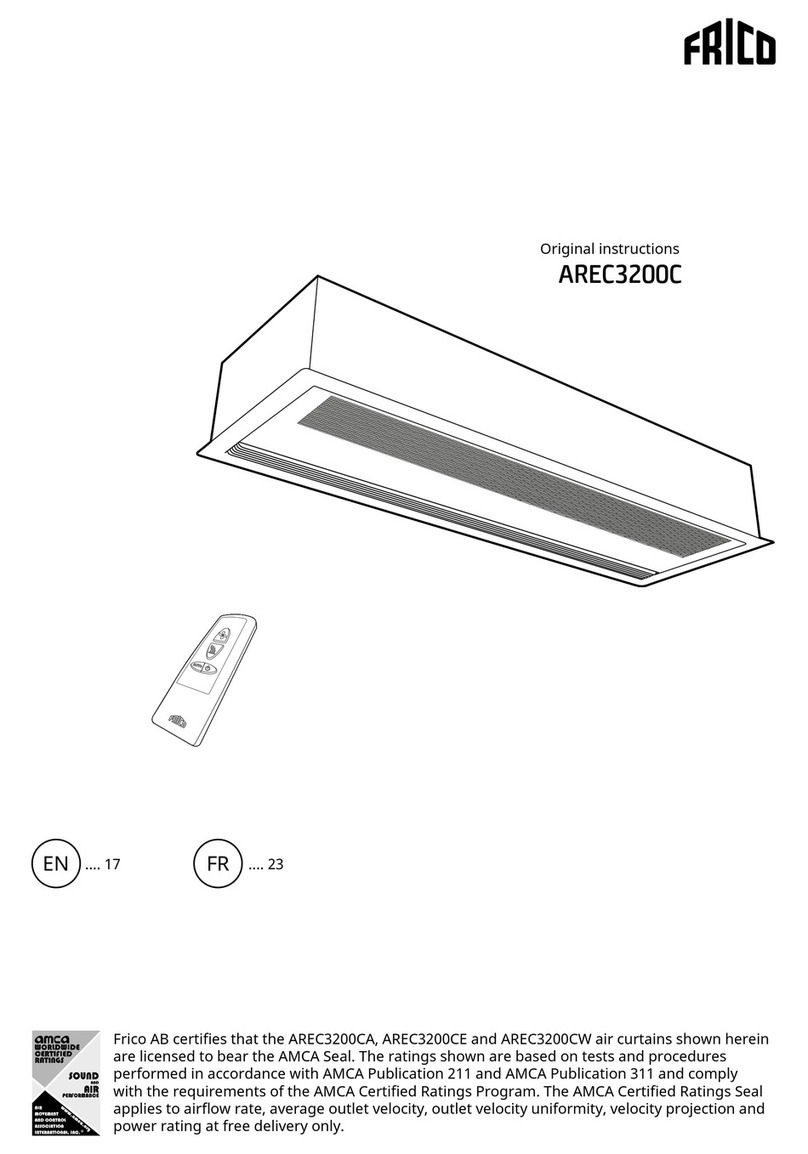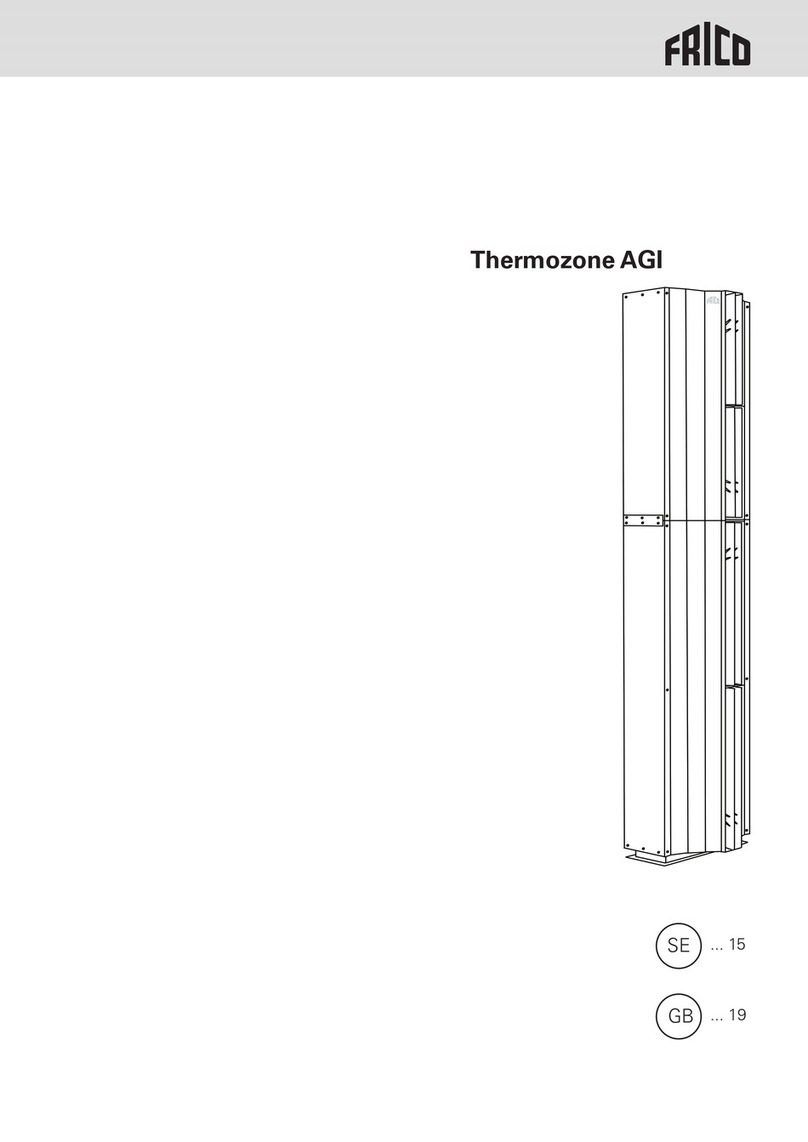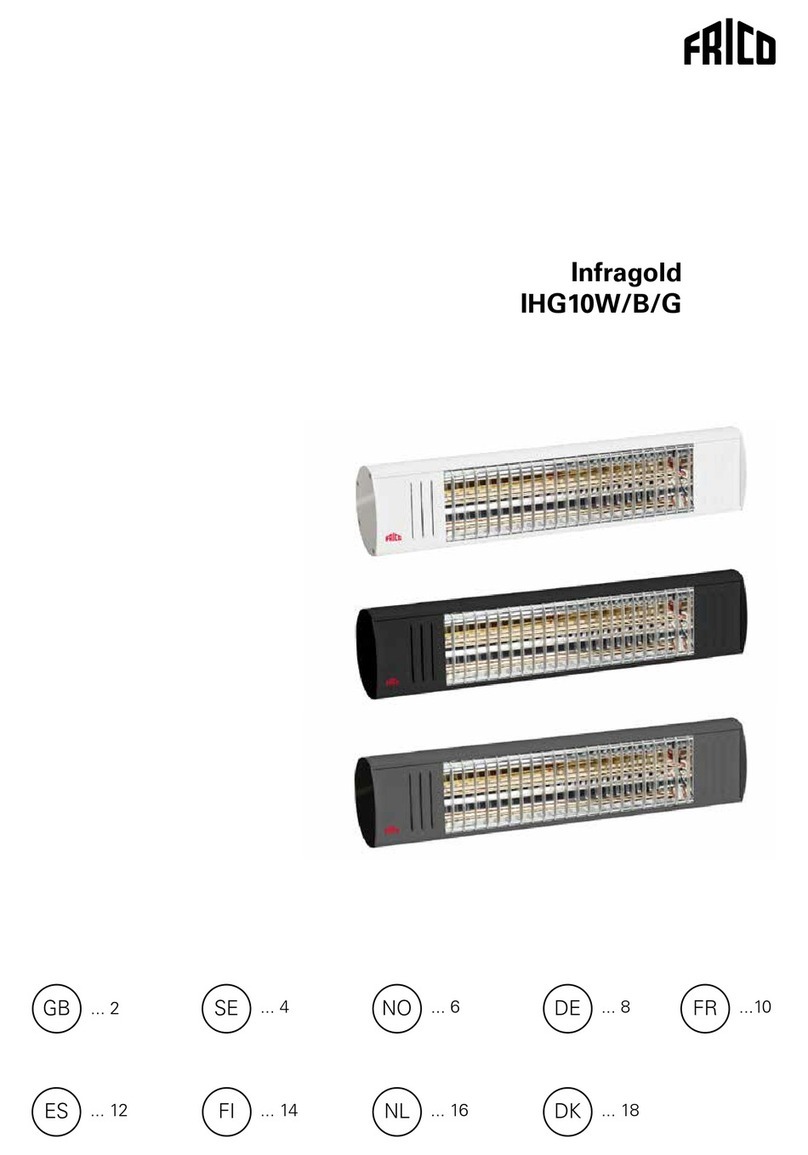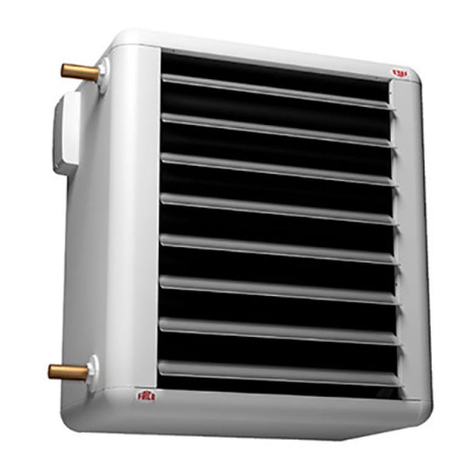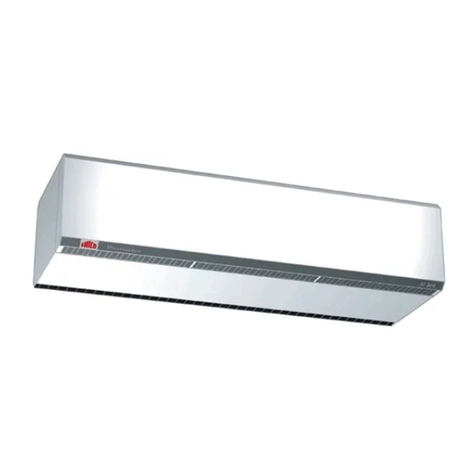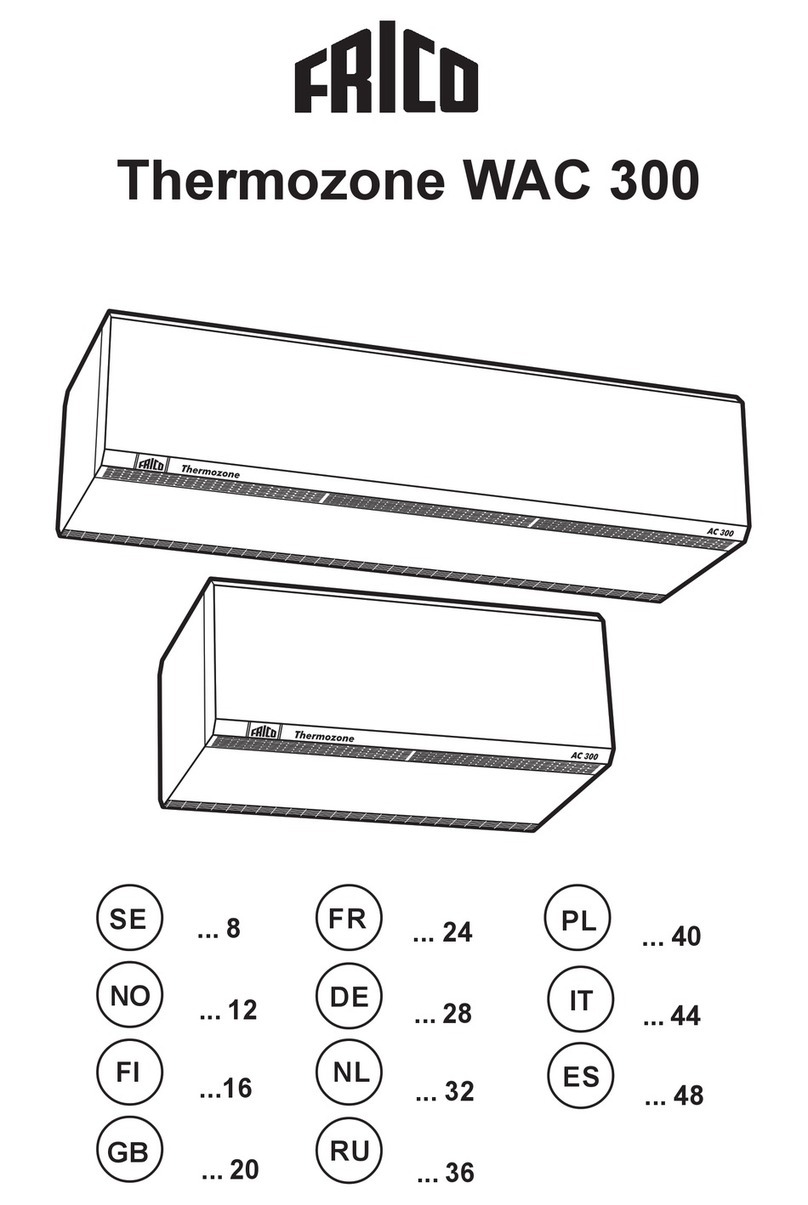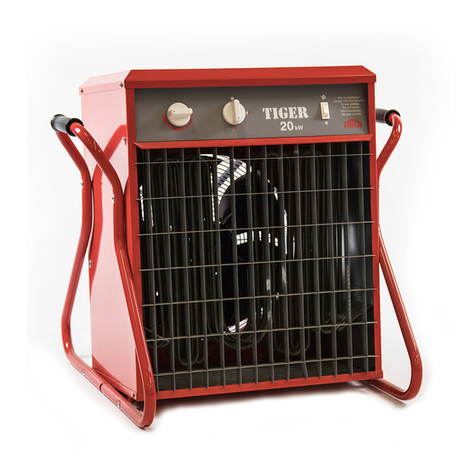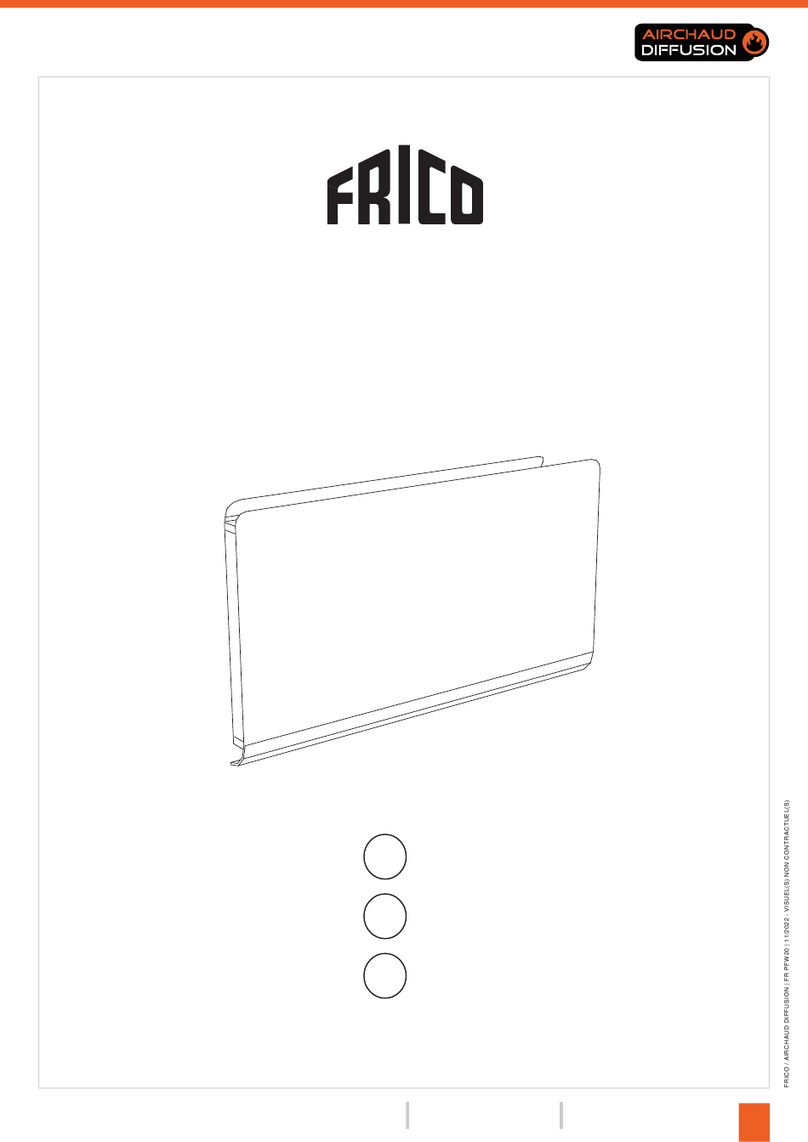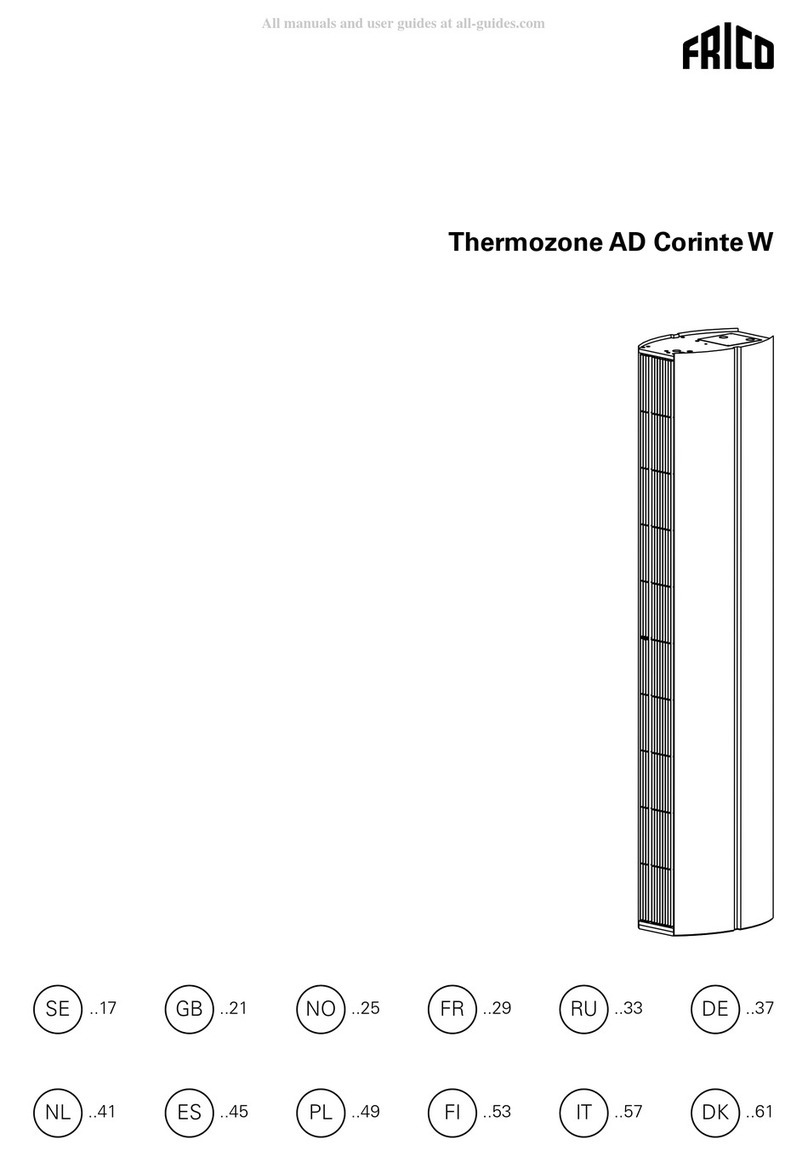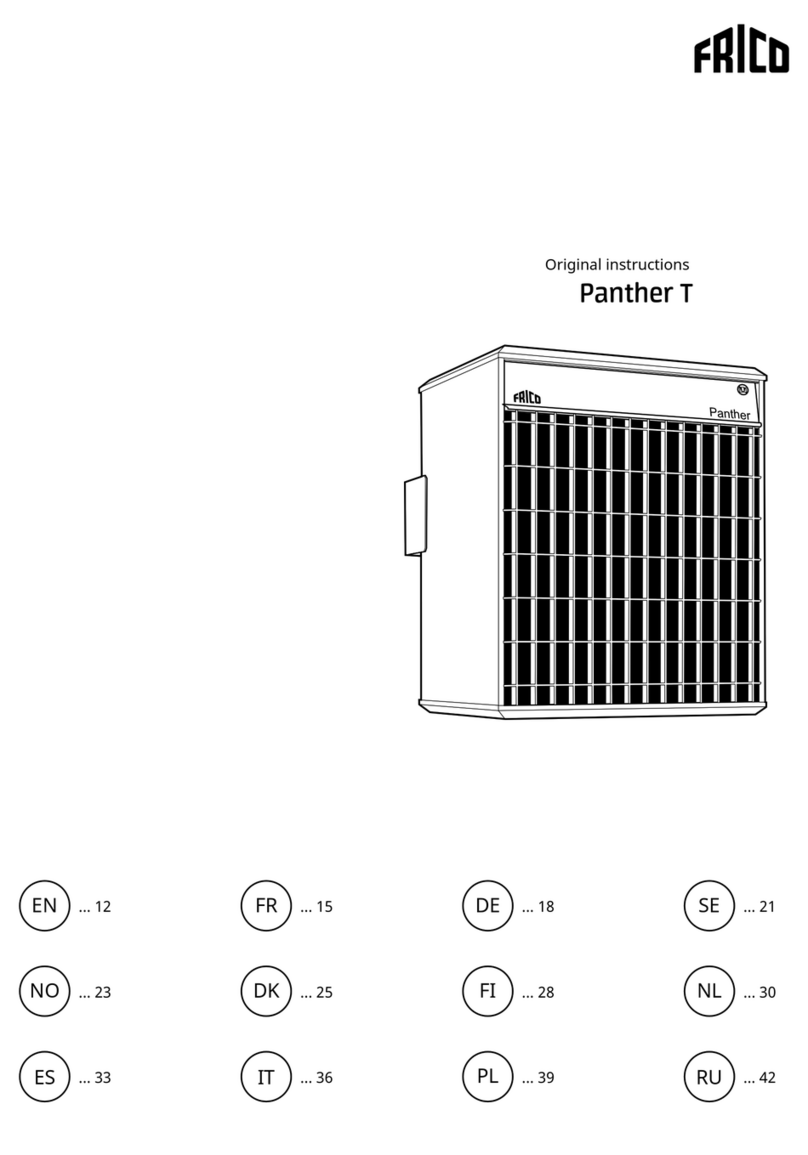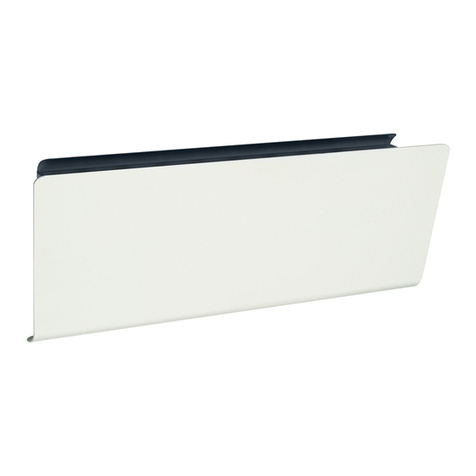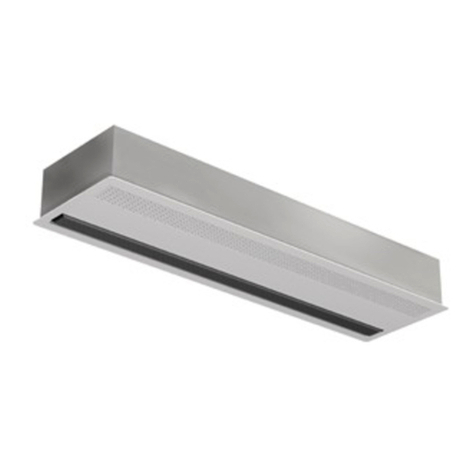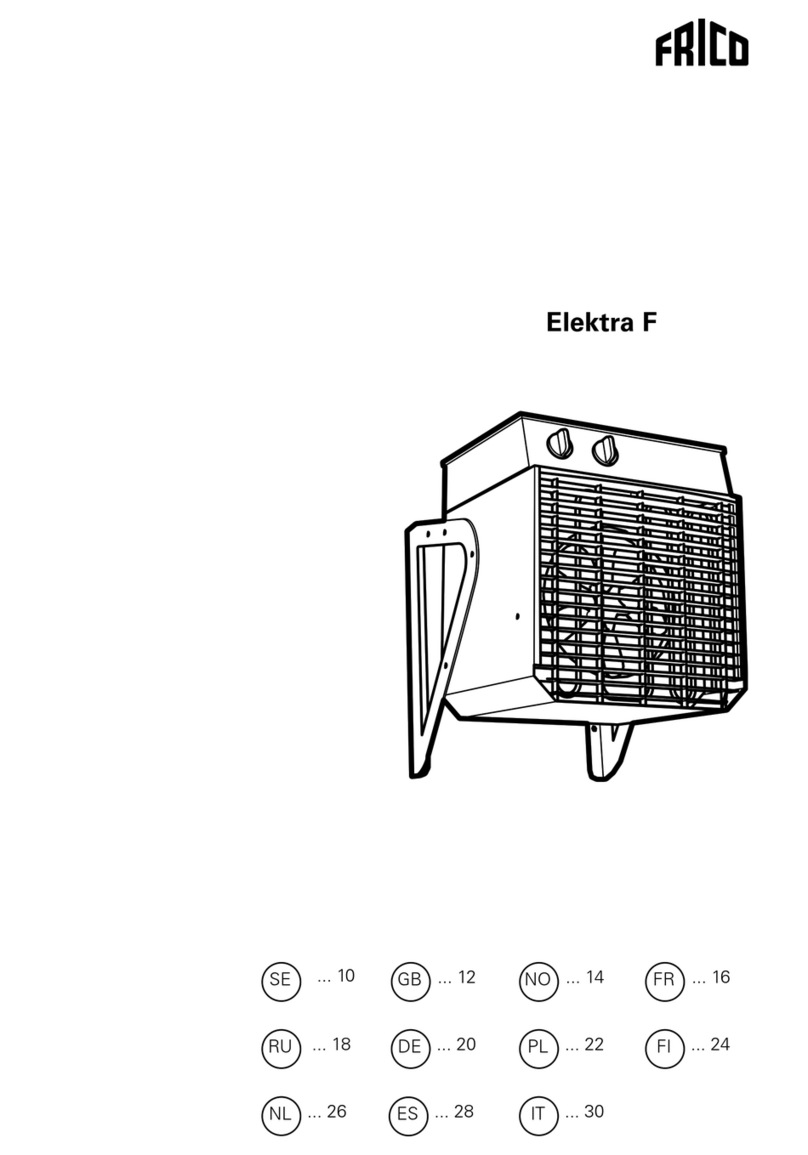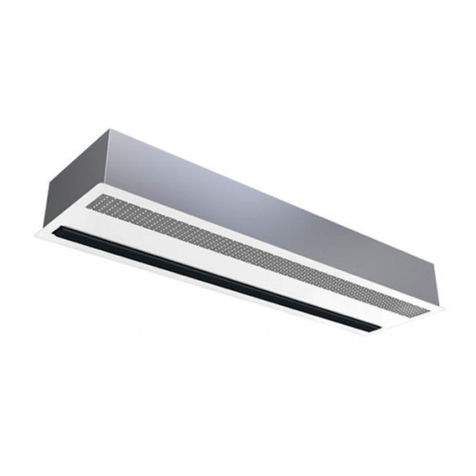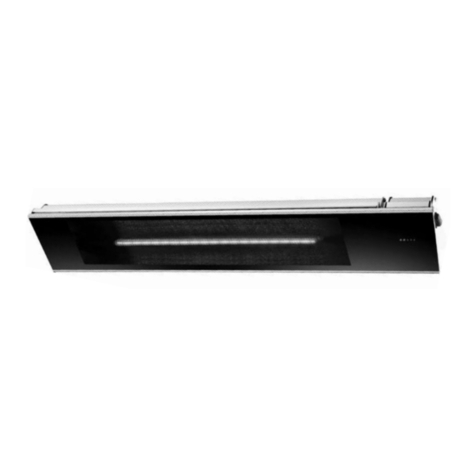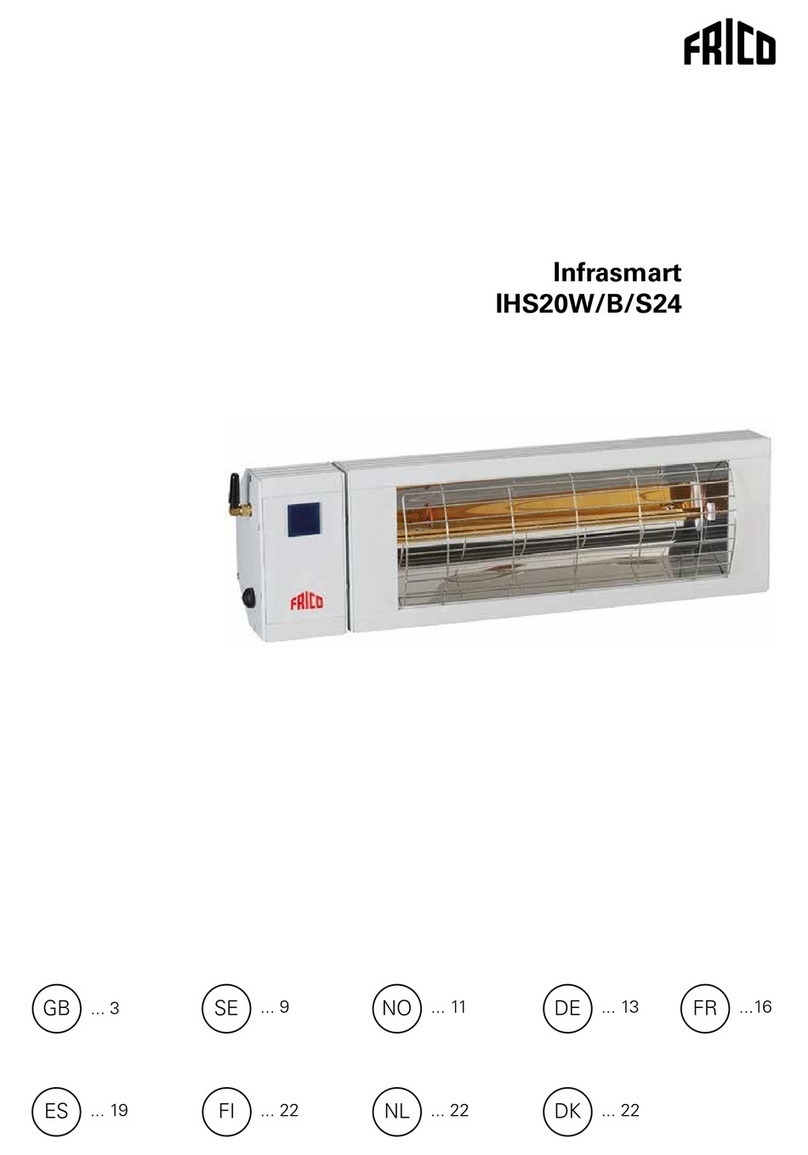
9
PFE/PFD GB
The thermostat
The thermostat range is 5-35oC. Normal working area
is marked (15-25oC). The setting on the thermostat is
calibrated for a normal room and some experimen-
tation may be required to nd the ideal setting. A
desired temperature of 20oC should be found within
the marked area. See page 2.
Master/slave function
When installing several radiators, it is possible to use
one radiator as master and the others as slaves. The
radiators are then controlled by the rst radiator’s
thermostat and this gives a more even heat contribu-
tion. A maximum of 10 slaves can be connected to
one master radiator.
On radiators of model PFE (230V~) the mains
cable must be exchanged for a special 4-core cable,
202111. The 230V~ elements have a cable with three
conductors. For the master/slave function, four con-
ductors are needed. The fourth conductor is used for
the signal input to/from the thermostats.
When connecting slaves the elements may get
power from several directions. All circuits must be
broken before connection terminals are made acces-
sible.
The master/slave function must be installed by a
competent electrician. See wiring diagram page 3.
Night temperature setback
Night temperature setback, i.e the possibility to lower
the temperature at night, can be connected on both
PFE and PFD. This means that the set temperature is
lowered 4°C. Night time reduction must be installed
by a competent electrician. On radiators of model
PFE (230V~) the mains cable must be exchanged for
a special 4-core cable, 202111
. The 230V~ elements have a cable with three con-
ductors. For night temperature setback, four conduc-
tors are needed. The fourth conductor is used for the
signal input to/from the thermostats.
The cable marked NS is connected through the
time switch to the neutral conductor, see also wiring
diagrams at page 3.
To change or remove the front panel
The front panel can easily be relacquered or the ap-
pearance changed by applying a plastic lm.
Disconnect the power before removing the front
panel, thereafter the two screws under the radiator are
loosened and the front panel is pulled downwards.
This must be done by a competent electrician.
Overheat protection
All electrical radiators are equipped with overheat
protection. The overheat protection is reset by turning
off the switch for 5 to 10 minutes. To allow the heater
to cool before resetting the power, remove any ob-
struction causing the unit to overheat. NB. Persistent
tripping of the overheat protection should be referred
to a service engineer.
Maintenance
In all electrical heating appliances, small clicks can
occur due to movement when the material expands
and contracts with changes in temperature.
Approvals
• Models up to 800 W have a low surface tempera
ture, 60oC maximum, and are suitable for use in
areas where lower surface temperatures are desired.
• Protection class: IP23.
• PFE is approved for mounting with plug or
permanent installation 230V~.
• PFD is approved for permanent installation
400V2~.
Safety
• The radiator must not be positioned immediately
below a permanent socket.
• Permanent installation must only be carried out by
a competent electrician.
• Do not cover - this can result in a risk of re!
• The radiator must not be mounted outdoors.
• The radiator should be positioned out of reach of
people in showers and bathtubs.
• Radiators for portable use must not be used close
to pools, bathtubs or showers.
• The radiator should be installed to ensure that
operation and maintenance can be carried out safely.
• Before service and maintenance is started, the
power must be disconnected and the fan wheel
must have stopped.
Maintenance, service and reparation
The radiator should be cleaned when necessary,
recommended at least twice a year to prevent damage
on the bearings (differs depending on the indoor
environment). If the air ow is obstructed it may
also lead to the overheat protection triggering off and
that the thermostat may be given wrong temperature
input. Lower the radiator forward. Vacuum the inlet
grilles on the back and underside. High pressure clea-
ning must not be used to clean the radiator. Cleaning
must be made carefully and only in exeptional cases
must the radiator be opened. The radiator must only
be opened by a competent electrician. The bearings
are maintenance free and should only be changed
when necessary. Make sure no discordant sounds are
heard from the fan. Make sure that the fan wheel is
not blocked. If the fan doesn’t start after operation
and/or reset of the overheat protection, contact the
supplier. A damaged mains cable must only be chan-
ged by a competent electrician.

